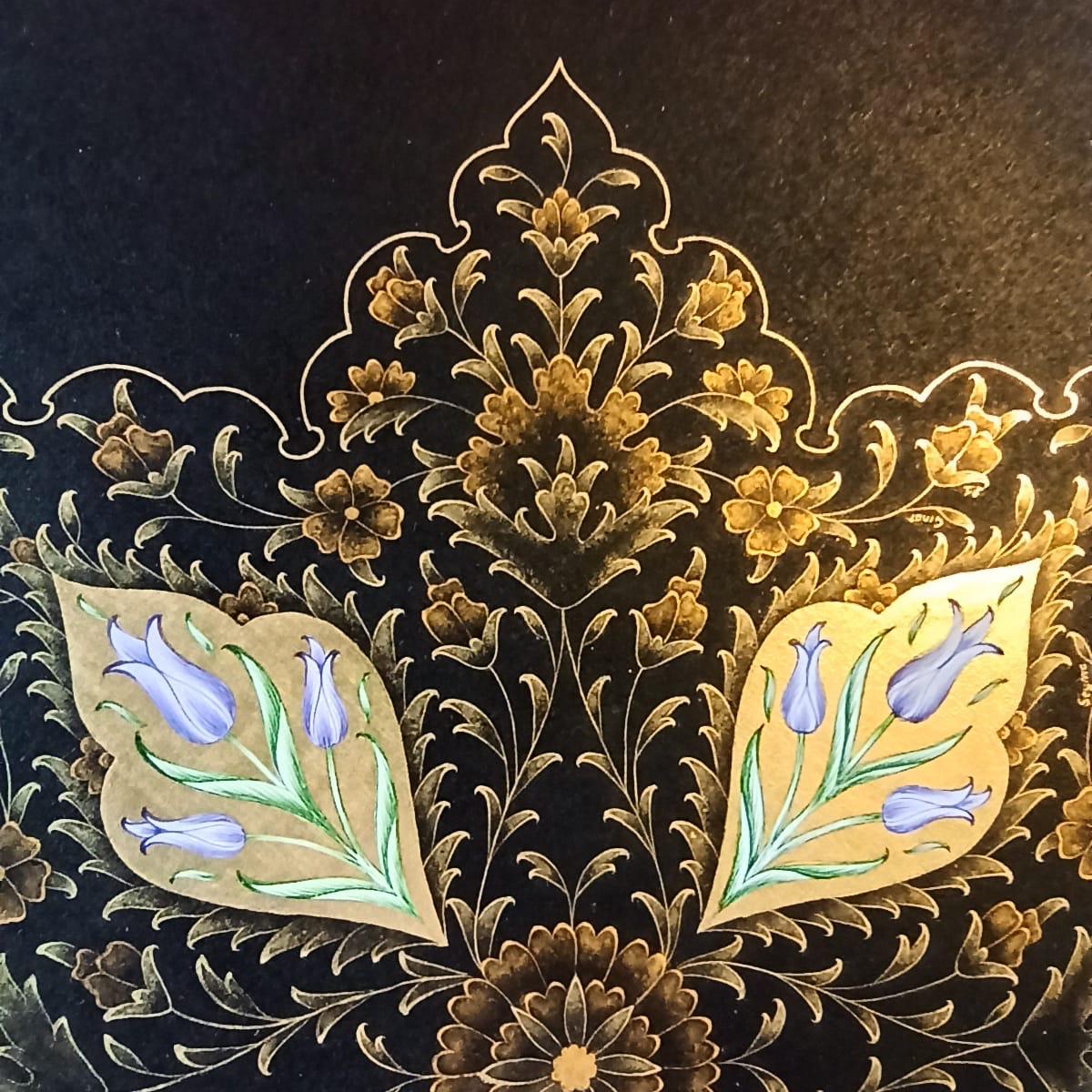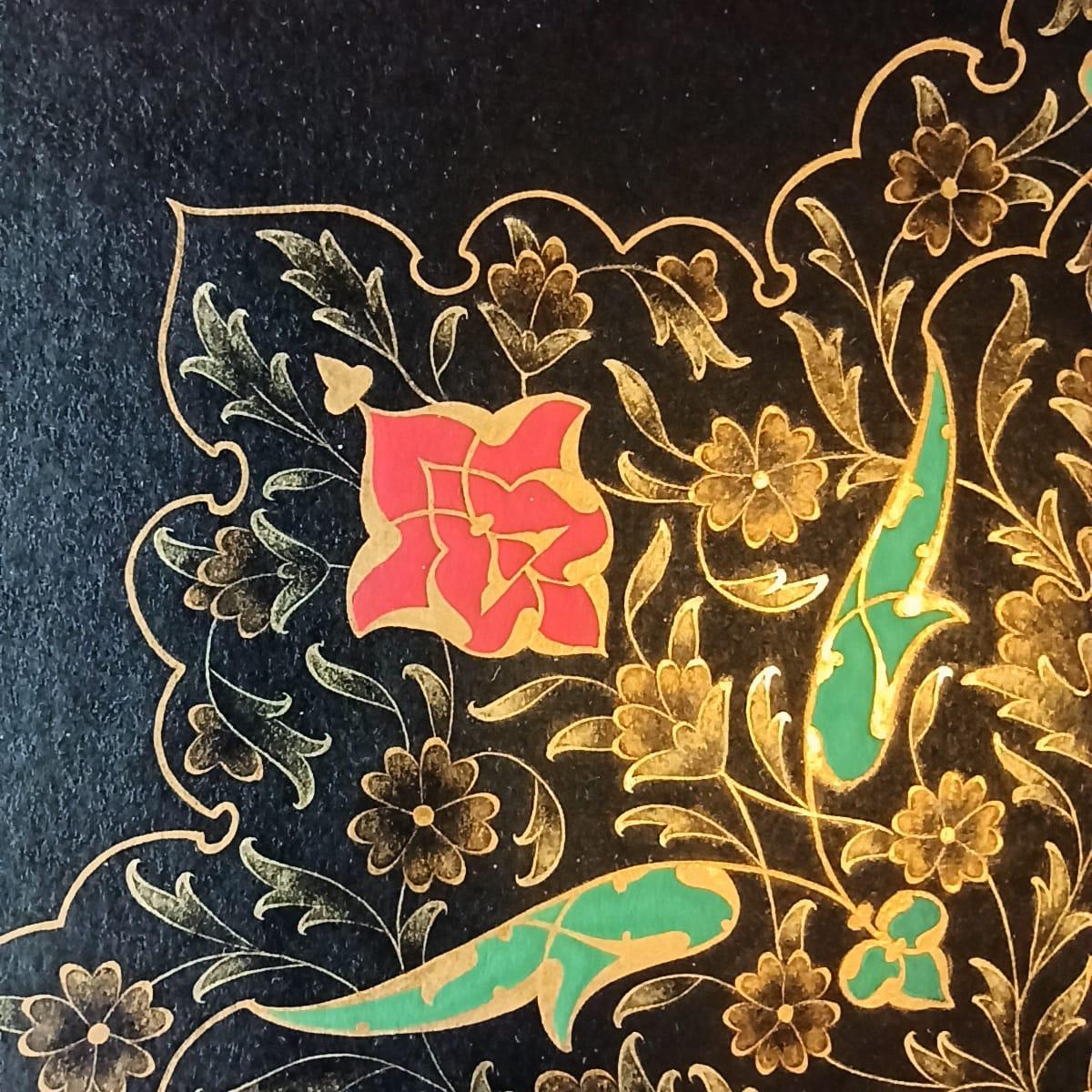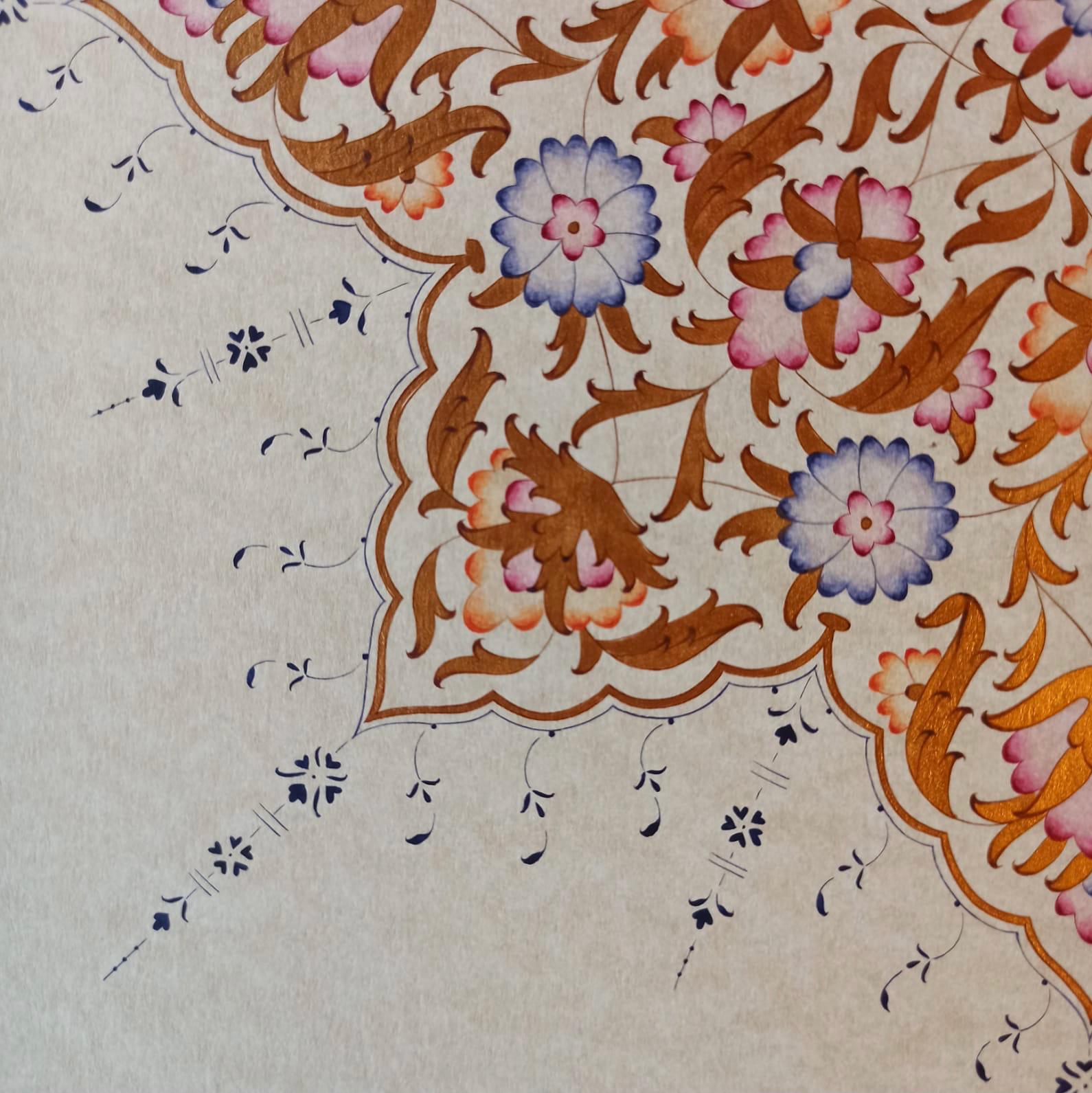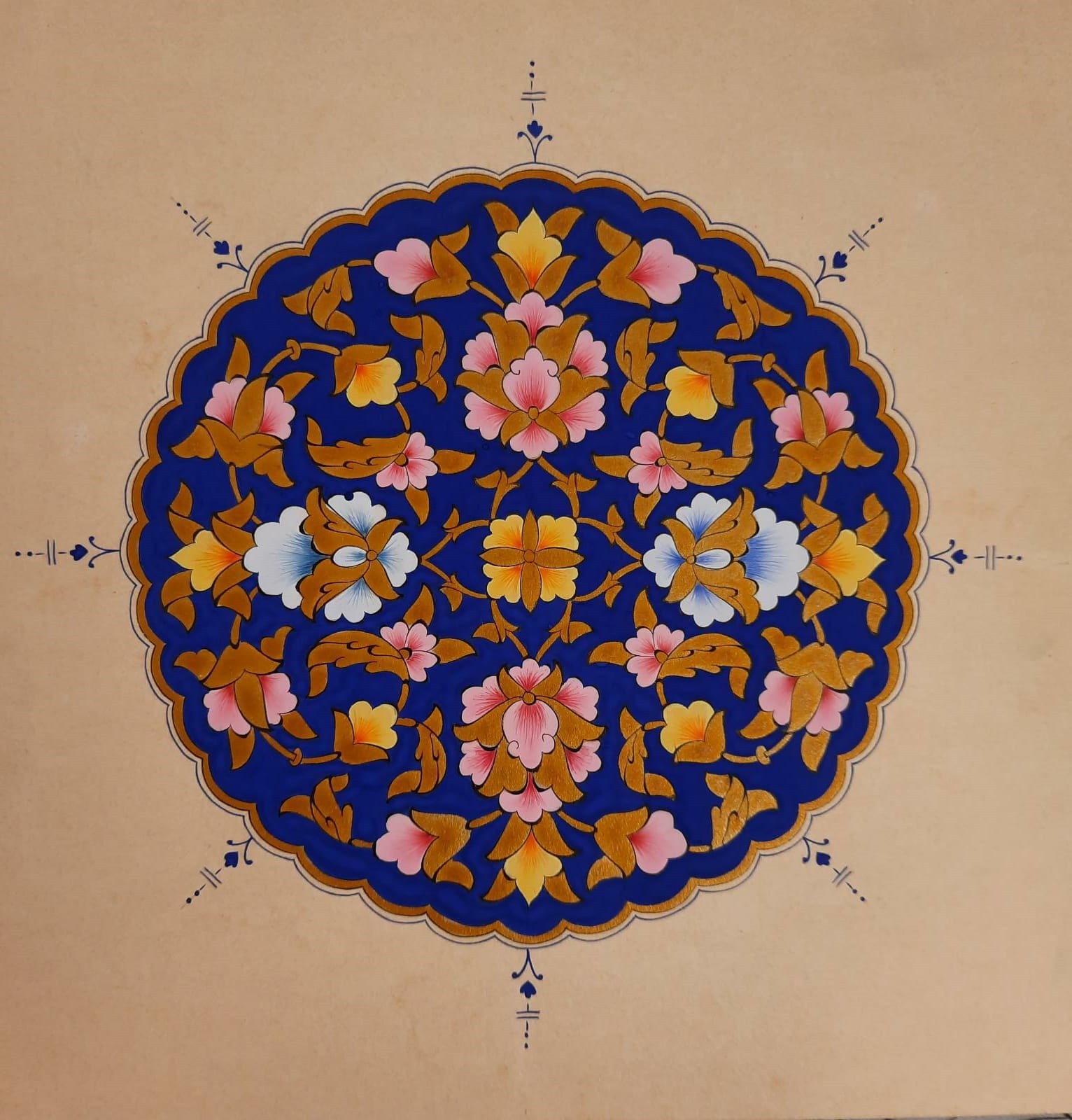Motifs
Motifs constitute the basis of Tezhip. Depending on the purpose and composition, motifs can be used in large proportions as the dominant design or as smaller motifs to enrich a larger design.
All classic motifs are stylized and drawn two-dimensional, with a strong emphasis on the weight and nuances of the lines in the drawings. This gives perspective to the design.
Techniques
Types of Motifs
There are two types of motifs: directional and non-directional motifs. Directional motifs are drawn in the plan in accordance with the direction of the stem and non-directional motifs have stems that enter and exit from all directions. Leaves and Flowers play a crucial role in Tezhip design, and are drawn through stylization of natural forms and shapes.
The Hatayi Motif
A Hatayi is a vertical cross section of a mature flower. This directional flower is a unique symbol across Islamic Arts and across Asia, and has a prominent place in Buddhist culture. The motif is drawn by sketching the geometry of the flower first, followed by the details of the flower, and finished off with the strokes.
Start with Sketching
Learning Tezhip starts with studying Tezhip motifs by sketching them in pencil to understand the proportions and to study the motifs, pattern, and design. Take your time in drawing motifs, your pencil habits also impact your brush habits and design skills.
What`s Next
After you have mastered the drawing techniques, you can start brushing your motif, pattern, or design with ink or paint brush. This step is called tahrir, which gives nuance to the artwork. The direction of the brush should remain the same until the line is finished and the line should be drawn slowly, in a controlled manner, and in one stroke if possible. Tahrir is best practiced by taping tracing paper over the design and going over the lines with a brush.





